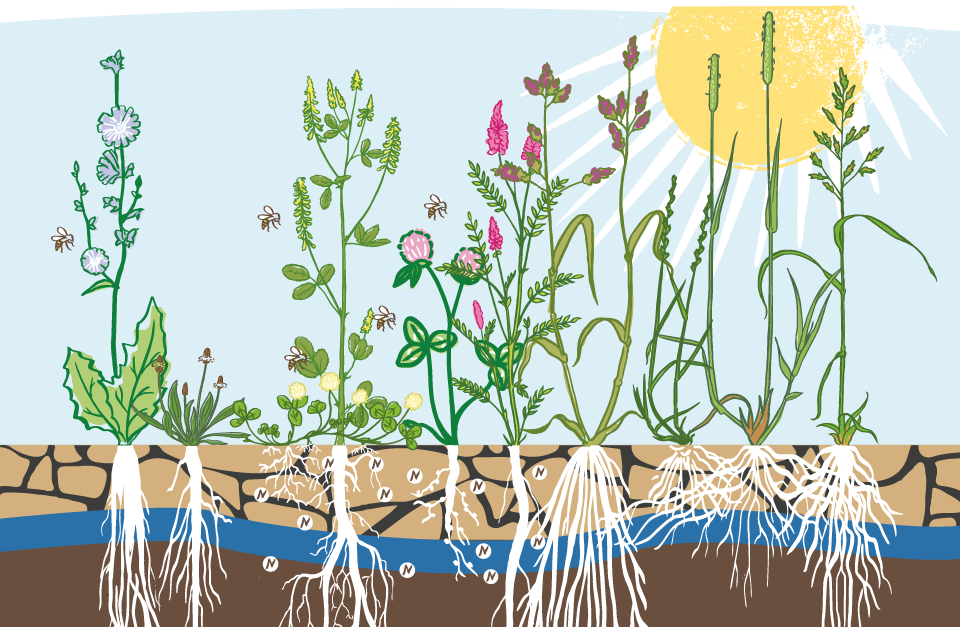

Suitable soils and optimum pH
These mixes are designed for light, free-draining land with a pH of 5.6-7.
When to sow
Sow between late March and early September. Late autumn sowing should be avoided when mixtures contain clovers.
How to sow
In mixed swards herbicide options are limited, an effort should be made to achieve several stale seedbeds before sowing to cotrol perennial weeds like docks and creeping thistle.
Sow into a fine, firm seedbed at around 10mm. Seed can be broadcast on a windless day, harrowed lightly and rolled. Alternatively, seed may be drilled in two directions into a well consolidated (rolled) seedbed. Consistently we have noticed rolling twice after sowing improves seed to soil contact and an even germination on lands not prone to capping.
Management
These leys depend upon developing a large number of deep roots. To achieve this these leys should be allowed to accumulate a lot of leaf and should then be heavily grazed (rotationally) before being allowed to repeat the cycle. Set stocking is less effective. Leys containing cocksfoot should be grazed frequently and cut young to ensure that growth remains leafy.
Nutrient requirements
N fertiliser (40kg N/ha) can increase early spring growth but high applications will impede clover growth and content which needs to be high for summer grazing production. P and K levels should be maintained at ADAS Index 2.
Yield potential
Cocksfoot-based leys: 12t DM/ha Ryegrass-based leys on dry, light land: 7t DM/ha Ryegrass-based leys with rainfall: 12t DM/ha
Date Posted: 18th January 2018



